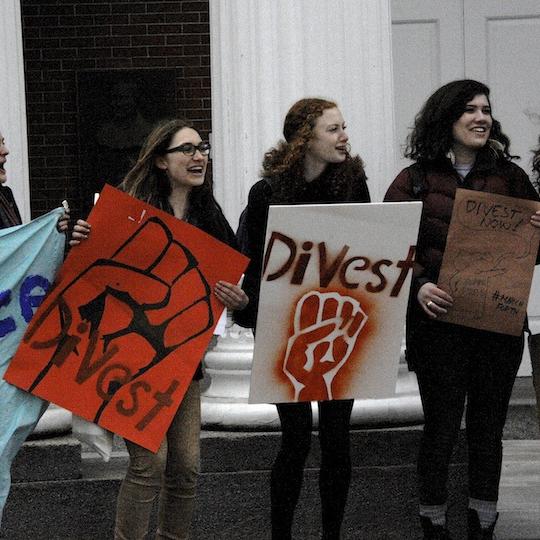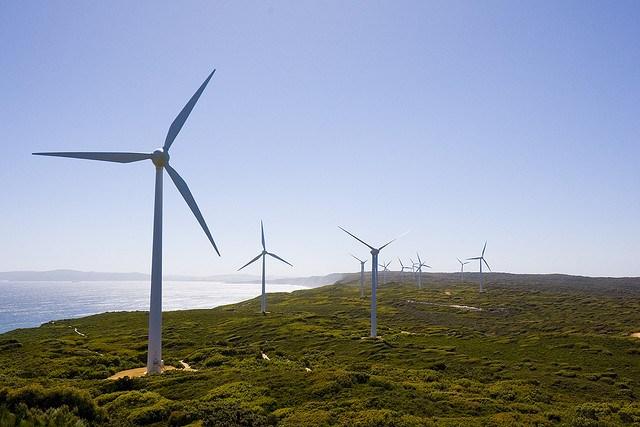Twitter Chat RECAP: The Responsible Business Leader's Guide to COP21 at #NzymCOP21


Today, TriplePundit, Novozymes, Four Twenty Seven and The Climate Reality Project came together at #NzymCOP21 for a special Twitter Chat about the case for responsible business and the importance of COP21. This chat coincided with Climate Week NYC.
All eyes are on the city of Paris, which will host December's 21st Conference of Parties (COP21), widely expected to be our last chance to get a global commitment to halt climate change!
While the U.N. talks themselves will be crowded with policymakers and state representatives, there will be many upcoming opportunities for the business community to get involved in the intervening months. During this Twitter Chat, we discussed best practices for companies that want to make their support for a global commitment on climate change known to the world.
This Twitter Chat marks a kickoff to an online discussion we’ll be hosting at #NzymCOP21 through the December climate talks.
During #NzymCOP21, our panelists shared their answers the following questions, and more:
- Why are all eyes on COP21?
- Why do we need science-based targets instead of incremental targets?
- What does carbon pricing really mean? What impact would it have if we had a pricing scheme in place?
- Should companies prepare to show up in Paris?
- What other ways can companies get involved from around the world?
- What happens with the COP process if no deals are struck?
- Claus Stig Pedersen (@Novozymes) - Senior Director, Head of Corporate Sustainability at Novozymes
- Emilie Mazzacurati (@427climaterisk) - Founder and CEO at Four Twenty Seven and climate adaptation expert
- Kenneth Berlin (@KennethBerlin) - CEO of The Climate Reality Project
- The TriplePundit Team:
- Nick Aster (@NickAster) -- Founder and Publisher
- Marissa Rosen (@MarissaR1) -- Director of Social Media
- Jen Boynton (@JenBoynton) -- Editor-In-Chief
- Mary Mazzoni (@Mary_Mazzoni) -- Senior Editor
Global Fossil Fuel Divestment Assets Reach $2.6 Trillion


It's being called the single biggest leap in fossil fuel divestment in history. On Tuesday, during Climate Week 2015, oil and gas divestment supporters and media gathered in a packed room at New York's Paley Center for Media to hear this year's tally of divestment commitments made by companies and private investments across the globe. With last year's count at $52 billion, and a modest number of companies and private investors signed up, the Divest-Invest campaign aimed to triple the number of commitments from universities, companies and individuals who previously relied on oil and gas investments as part of their portfolios.
The organization did far better than that assertive goal.
"To date, 430 institutions and 2,040 individuals across 43 countries and representing $2.6 trillion in assets have committed to divest from fossil fuel companies," says the organization. The surge translates to a 50-fold increase in divestment assets since last year's Climate Week.
Part of that boost was due to recent decisions by some 40 educational institutions to divest, either wholly or in part, from fossil fuels. The University of California, Georgetown University and Oxford University were among the largest. The $130 billion in divestments is representative of the impact that student protests are having across the world, said Alden Finney, a student and divestment organizer at the University of California.
"Students come to the table because they realize climate change is an injustice," Finney said.
Governments are also stepping up to the plate. Increasing pressure from constituents, and the financial impact of climate change, has been encouraging state and local governments to redirect their pension fund investments. One of the largest divestments occurred this month, when the California General Assembly voted to yank its $476 billion in pension fund investments from those companies that get at least half of their revenue from coal. And U.S. cities aren't the only local governments to have a change of heart. Australia's Capital Territory and the Australian city of Newcastle also backed away from oil and gas investments.
"The average emember of our valuation funds is 30 years old," said Simon Sheikh, CEO of the Fossil Fuel Free Super Annuation Fund in Canberra, Australia, and they want to ensure that their investments match their future retirement needs. "They want their pension funds to be right along beside them" when they retire, Sheikh told 3p.
On hand to lend support to the campaign was actor Leonard DiCaprio, who has announced that he has dropped fossil fuel investments from both his personal portfolio and the assets of his philanthropic organization, the Leonard DiCaprio Foundation. DiCaprio has been a leading supporter of the efforts to fight climate change, so the announcement is no surprise. But it helps to underscore a key point in this investment shift, said Dr. Ellen Dorsey, conference moderator and executive director of the Wallace Global Fund: Charities are making the change in large ways and shifting the balance in energy investment strategies.
"The philanthropic sector has been a substantial force in this movement," Dorsey said. More than 140 organizations have pledged divestment recently, adding another $10 billion to the tally.
Faith organizations in particular, says the Divest-Invest report, are stepping forward to encourage the transition from fossil fuel investments. "Faith leaders of diverse religions and creeds are demanding our world’s leaders take meaningful action to curb climate change at the U.N. climate negotiations in Paris in December." More than 120 different organizations, representing $24 billion, have made a commitment to switch to sustainable investments.
"For faith communities, the earth is our house and we want to pass it on at least as good as we received," said Rev. Fletcher Harper of Green Faith. He noted that it isn't just Christian communities that are stepping forward to call for divestment, but "Muslim and Hindu" communities as well. A coalition of Muslim leaders from 20 countries recently made an appeal for investors to divest from oil and gas industries.
Jewish communities, as well, have stepped forward to advocate for divestment. In February 2014, a consortium of faith-based organizations wrote to Pope Francis, calling on the Vatican to support divestment efforts. The request was co-signed by Rev. Harper and Rabbi Jonathan Keren Black, president of the Australian Religious Response to Climate Change, a multi-faith coalition. Similar calls have been heard here in the U.S., Canada and Israel.
The Executive Secretary of the United Nations Framework Convention on Climate Change, Christiana Figueres, opened the press conference by noting the significance of the announcement. It "shows the real strength of this momentum for change," Figueres told the audience. She said there are three underpinnings to shifting the world's economy away from fossil fuels and climate change, which she said has already been proven to be, in part, a by-product of fossil fuel carbon emissions.
The capital shift away from oil and gas investments "must keep pace with the scientifically-defined timelines" set for reducing global warming, Figueres said. And the shift must be "rapid but orderly."
Governments and investors must work hand-in-hand through strategies that incentivize this shift, such as carbon pricing, subsidies that incentivize change and other innovative options.
"Investing at scale in clean, efficient power offers one of the clearest no-regret choices ever presented to human progress," Figueres said at Climate Week.
Other speakers included but weren't limited to Rev. Lennox Yearwood, Jr., president and CEO of Hip Hop Caucus, who highlighted the effort of artists to bring discussion about fossil fuel divestment to the fore, and May Boeve, executive director of 350.org, who noted that as momentous as the $2.6 trillion announcement sounds, it's only a benchmark.
"We're not done," Boeve said decisively. There will be more public marches and calls for divestment across the world, including in Japan and the Vatican. There will also be efforts to spearhead the divestment of a dozen cities in the U.K.
"These numbers mean a lot of things," Boeve explained. But most importantly, it means businesses and investors aren't the only ones who need to take climate change and fossil fuel divestment seriously. "We need governments to divest also."
Image credit: Flickr/James Ennis
VW Scandal Exposes What Has Gone Awry with 'CSR'


The emissions-rigging scandal that Volkswagen has driven into keeps getting worse. What was originally disclosed to be a “defeat device” installed in half a million diesel-powered cars could affect as many as 11 million of the German automaker’s vehicles. These revelations mark a stunning fall for VW, which earlier this year made good on its long-term goal to leap ahead of Toyota as the world’s largest automaker. Shares in the company’s stock have fallen 20 percent, its CEO is under fire and trust in its brand will be long tarnished.
As if we did not have enough of kicking a company while it's down, viewers of Sunday night’s Emmy Awards were treated to Audi commercials featuring Kermit the Frog singing “It Isn’t Easy Being Green,” while NFL football fans were treated to another line of the company's commercials touting “truth in engineering.”
But those indulging in Schadenfreude over VW’s woes need to take a step back and see the ramifications of their choice to cheat emissions standards in favor of vehicle performance. These events are a massive setback for the automotive industry at large, which for decades had long resisted any mandates, from seat belts to better fuel mileage, to implementing new environmental or safety measures. The past several years, however, have seen a shift, as automakers improved their cars’ environmental performance while investing in next-generation vehicles — even at a time of low petroleum prices. VW wanted to capitalize on increased interest in clean vehicles without actually meeting the standards and they got caught.
For Germany, VW’s shenanigans are a kick in the gut for a progressive, proud and accomplished nation that has long been carrying Europe — economically, politically and morally (as in the refugee crisis) -- on its shoulders while its neighbors bicker and absolve themselves of any responsibility. As CNN deftly points out, VW and its portfolio of brands, are a critical cog in Germany’s economic engine. If consumers worldwide start spurning German cars, the sputtering of the world’s fourth largest economy will come at a terrible time as it copes with an additional 1 million people who have crossed its borders.
What looks to be the decision of a few rogue executives will long tarnish the reputation of a company that has not only enjoyed a solid record of engineering and customer satisfaction.
But Volkswagen’s self-immolation also reflects on many of us who have been deeply involved within the corporate social responsibility (CSR) movement. Last week, Volkswagen led the Dow Jones Sustainability Index automotive sector. This week, it was called to the carpet for environmental sins only to admit several days later it deceived millions of customers in the pursuit of profit. We obviously need to take a step back and look more deeply at what we're measuring.
When a company pitching a product tied to depleting municipal water sources as well as obesity, like Cola-Cola Enterprises, is listed on the DJIA, we should scratch our heads. When a company such as Unilever, which boasts about 2 billion people a day using its products to “look good, feel good and get more out of life,” also makes this prestigious sustainability listing, the logic should give us pause and make us scratch our heads. Companies that ordinarily would fall under the radar, such as Thai Oil — which is also on the DJSI despite a questionable record on human rights — reveal a global business culture that awards and rewards itself on “sustainability” and “responsibility” but frequently does not match accolades with accomplishments.
Unfortunately, while the ideals behind corporate social responsibility certainly have merit, the overall execution has been deeply flawed. The trend in CSR has been to focus more on goals and aspirations, and less on concrete and tangible results. Companies often highlight what they say they will do in 2020 or 2025, and focus less on what happened last year or in 2015. Professionals in this space travel across the U.S., even the world, to present their findings at conferences and congratulate themselves on how well they are doing. And all of this is backed up by relentless public relations professionals, who issue streams of emails with platitudes such as, “our inclusion in the DJSI is due to our success integrating sustainability into our core decision-making, and delivering sound long-term plans for sustainable development.”
Sadly, they get away with it, because no one is going to follow up five years from now and ask about whether they achieved those benchmarks touted earlier in the decade. Why would it be any different? Questions at these events are less about “What have you and your company done?” and more about “Are you going to X conference in X city?” The result is an industry that is built upon self-congratulation.
When companies decide to place emphasis more on how to style a responsible company, and less on substance, we in turn create a culture in which a few people at a corporation feel as if they can break the rules in the belief that no one will notice.
This saga at VW should, therefore, send a strong message to companies that -- no matter how good their storytelling is, no matter how lofty their goals are, no matter how many villages were helped or carbon emissions diverted -- most people want to know these organizations are having a real, positive impact. Once egregious behavior, such as the installation of defeat devices, is publicly revealed, that trust is gone, and it will take years for reputation and stock prices to recover.
It is time for companies to focus less on rankings, less on platitudes and less on generating positive press. Honesty, transparency and real impact will not only keep the public’s trust, but also, pragmatically, keep those customers and build a stronger, more reputable and sustainable company in the long run.
Image credit: Bull-doser via Wikimedia Commons
Published earlier today on Triple Pundit.
Emissions from Melting Permafrost Could Cost $43 Trillion


While rain forests have long scored attention for their role in trapping carbon, discussions concerning the Arctic have centered on whether or not, or how much, we are going to allow companies to drill for oil far up north.
Now, scientists are suggesting the Arctic should have renewed focus for another reason: Climate change, accelerated by the melting of permafrost and resulting greenhouse gas emissions, could cost the global economy, in the long run, as much as $43 trillion.
This analysis was published in the journal Nature Climate Change by a joint group of scientists from the University of Colorado and the University of Cambridge. In a letter, the study's lead authors, Chris Hope and Kevin Schaefer, suggest that the Arctic region is warming at approximately twice the rate of the global average.
Why is this a potential threat? Hope and Schaefer’s team posit that the melting of permafrost, in addition to the loss of ice sheets in Greenland and the far northern islands of Canada, will lead to the release of countless billions of tons of not only carbon dioxide, but also far more damaging methane gas. The release of additional greenhouse gases into the atmosphere will cause a bevy of problems: Damage and loss to real estate in coastal areas, the loss of crops due to higher temperatures, decrease in electricity from hydropower, and increased use of air conditioning are just a few examples of the hits to the global economy. Those losses would far outweigh any economic benefits, such as the opening of Arctic shipping routes, investment in low-carbon transportation or economic development in the world’s far northern regions.
Hope, a professor of business, and Schaefer, a research scientist specializing in permafrost carbon, arrived at their financial figure by using data from the PAGE09 (Policy Analysis for the Greenhouse Effect) assessment model. If current weather patterns continue, the total cost of climate change through the year 2200, in their estimation, could increase to $369 trillion — a 13 percent increase from what is generally agreed to be the long-term cost of climate change. Their study, however, is not completely dystopian. They suggest that if aggressive climate change strategies are implemented worldwide, that figure could shrink by $37 trillion.
This analysis on the potential impact of permafrost loss will grab the attention of a wide array of industries. Energy companies determined to drill in the Arctic would have to balance those gains versus the specter of an accelerated demand for fuel-efficient vehicles; insurance companies would need to assess how they insure buildings and homes in coastal areas; food companies may have to decide whether regions from which they have long sourced ingredients will still be relevant for their supply chains. If proponents of a global deal at the COP21 talks in Paris need more ammunition to make their case that climate is a matter to be taken seriously, this study will definitely boost their arguments over the next few months.
Image credit: Flickr/Mike Beauregard
NGO: 45 Percent of Corporations Obstruct Climate Change Policy


Nearly half of the world’s 100 largest companies, including Procter & Gamble and Duke Energy, are “obstructing climate change legislation,” according to a study released last week by the London-based nonprofit NGO InfluenceMap.
And it gets worse: Almost all (95 percent) of these companies are members of trade associations that act in the same obstructionist manner. The recently formed InfluenceMap uses a new research methodology it developed in conjunction with the Union of Concerned Scientists.
InfluenceMap’s research found that despite their public communications, few corporations have actually supported the progressive climate policies being proposed by governments globally.
“More and more, we’re seeing companies rely on their trade groups to do their dirty work of lobbying against comprehensive climate policies,” Gretchen Goldman, an adviser to InfluenceMap and the lead analyst for UCS’ Center for Science and Democracy, said in a statement. “Companies get the delay in policy they want, while preventing nations from acting to fight climate change.”
There also remains a lack of transparency around their relationships with trade associations, with very few companies willing to publicly challenge them despite “clear misalignment” between their climate positions and the actions of the associations. “That said, almost half of the world’s largest companies have also recently been involved in directly advocating against climate policy, including BMW, EDF and Boeing, companies that highlight their own sustainability credentials,” says InfluenceMap.
Corporate influence over the climate change debate and policy process is often cited as a key reason for the relatively slow progress of both the U.N. COP process and national-level climate legislation, InfluenceMap noted. “The research also shows that corporate influence over climate extends beyond the activities normally associated with lobbying, including intervention in the public discourse on climate change science and policy via advertising, PR, social media and access to decision-makers, as well as the use of influencers, such as trade associations and advocacy groups.”
Breaking the obstructive trend, Unilever (owner of Dove, Knorr, Flora and other brands) is ranked as a leader in InfluenceMap’s scoring system, supporting multiple strands of climate policy globally. This contrasts with rival P&G (owner of brands like Gillette, Wella and Ariel), which, despite its stated support for action on climate change, is a member of BusinessEurope (recently under attack in the U.K. media for its obstructionist stance toward climate legislation), and the secretive U.S. industry group, NEDA/CAP, which has sued the EPA to prevent the agency from using the Clean Air Act to regulate greenhouse gas emissions.
Other trade associations, including the European Chemical Industry Council (CEFIC), the European Automobile Manufacturers Association, the American Petroleum Institute, National Association of Manufacturers, U.S. Chamber of Commerce, Business Council of Australia, and the powerful Japan Business Federation, which counts almost every major Japanese company as a member, have all strongly opposed climate legislation for years.
Does it get even worse? Well yes. In a New Yorker piece last week, Bill McKibben, author, educator, environmentalist and co-founder of 350.org, wrote that InsideClimate News has published the first installment of a multi-part exposé about ExxonMobil’s long history of deception on climate change.
The documents and interviews InsideClimate News conducted with retired employees and officials “show that, as early as 1977, Exxon (now ExxonMobil), knew that its main product would heat up the planet disastrously. This did not prevent the company from then spending decades helping to organize the campaigns of disinformation and denial that have slowed — perhaps fatally — the planet’s response to global warming,” McKibben wrote. He continued:
“An Exxon senior scientist named James Black was, according to his own notes, able to tell the company’s management committee that there was ‘general scientific agreement’ that what was then called the greenhouse effect was most likely caused by man-made C02; a year later, speaking to an even wider audience inside the company, he said that research indicated that if we doubled the amount of carbon dioxide in the planet’s atmosphere, we would increase temperatures two to three degrees Celsius. That’s just about where the scientific consensus lies to this day.” Note: This was in 1977!
Is any of this surprising? Not really, because, well, corporate power always rules. In Exxon’s case, it was “the road not taken” in order to protect its business.
But the length and depth of the deceit and hypocrisy — at the extreme cost to the planet for nearly 40 years, and continuing to this day — is shameful, disgusting and depressing.
Image courtesy of InfluenceMap
The Role Cities Can Play In Reducing Greenhouse Gas Emissions


Power generation produces the most carbon emissions in the energy market around the globe. Currently, power generation emits enough greenhouse gas emissions to equal the emissions from all of the world’s cars. Cities use 78 percent of energy globally, according to a United Nations report, and produce over 60 percent of carbon emissions. So, they can play a big role in reducing emissions by adopting clean energy.
This year, 308 cities are participating in CDP (formerly the Carbon Disclosure Project), and 162 responded to a survey about their energy use. Cities overall are making “significant strides” to shift to low-carbon energy, CDP found. Thirty-five percent of cities reported they get three-quarters of their electricity from non-fossil fuel sources. Over a third of the cities who disclosed to CDP this year reported having some kind of renewable energy target.
What CDP found is that, among participating cities, regions vary. For example, Latin American cities get about 76 percent of their electricity from clean sources on average, while European cities get 59 percent of their energy from clean power. Cities in the Asia Pacific region get 15 percent of their electricity from non-fossil fuel sources.
Some cities really stand out, and two of those outstanding ones are in California. Santa Monica and San Francisco have a 100 renewable electricity target in place. The Texas city of Austin committed to sourcing 55 percent of its electricity from renewable sources by 2025. It’s a goal the city reports it is on track to meet four years ahead of schedule through renewable power purchase agreements and energy-efficiency programs. Aspen has already achieved its 100 percent renewable electricity target. Clearly, western U.S. cities are leading the way.
But how do cities fare in other regions? One European city, Stockholm, Sweden, has the goal to be fossil fuel free by 2040. The Australian city of Canberra has a goal of getting 90 percent of its electricity from large-scale renewables by 2020. That goal will achieve a 40 percent reduction in greenhouse gas emissions.
There is a financial incentive for cities to transition to cleaner power sources. Eighty-six percent of the cities who reported to CDP said they see economic opportunities from efforts to deal with climate change. A Citi report predicts that over the next 25 years about $200 trillion will be spent on energy. The cumulative lost GDP from climate change impacts, according to the report, could equate to $44 trillion on an undiscounted basis. So, investing in cleaner energy will pay off for cities. As McKinsey predicted, $1 of every $8,000 spent is required to support achieving renewable energy goals that have a clean electricity target.
That’s a small payoff to help the planet and achieve financial savings.
Image credit: Flickr/Lawrence Murray
Fortune 500 companies pledge to use 100% renewable electricity


Partner numbers at RE100 are swelling with news that a number of globally recognized US businesses have joined the campaign, pledging to source 100% of their electricity from renewable sources.
The firms include Goldman Sachs, Johnson & Johnson, NIKE, Inc., Procter & Gamble, Salesforce, Starbucks, Steelcase, Voya Financial, and Walmart.
RE100 is the global campaign led by The Climate Group in partnership with CDP, to engage, support and showcase influential businesses committed to 100% renewable electricity.
America’s business drive to a low carbon economy has been picking up speed recently. Goldman Sachs and Walmart were two of 13 companies in July to commit to reducing their emissions as part of the American Business Act on Climate pledge – and the White House is expected to announce new names next month.
RE100 was launched a year ago with 12 original corporate partners – IKEA Group, Swiss Re, BT Group, Formula E, H&M, KPN, Nestlé, Philips, RELX Group, J. Safra Sarasin and YOOX Group – as well as Mars, Incorporated, the first US business on board.
Thirty six major businesses from around the world have now joined the campaign, with green desert economy developer Elion Resources Group becoming the first Chinese company in March 2015, followed in May by the first Indian company Information Technology leader Infosys.
Last week saw the addition of Swiss financial services provider UBS, and earlier this week the first science-based participant, Dutch life sciences and materials sciences company Royal DSM.
Picture credit: © Madmaxer | Dreamstime.com
40 Local Governments Set Collective 7.9 Gigaton Climate Goal


Much is being made about this fall’s COP21 talks on climate change, which, if successful, could accelerate greater cooperation on reducing greenhouse gas emissions worldwide. So far, the collective response of countries has been encouraging, from the United States’ declaration of goals to those recently issued by tiny Grenada. To date over 60 countries have submitted proposals; far more are expected to do so before the conference in Paris launches in late November.
The reality, however, is that it will take more than national governments to push the needle on climate change if we are to believe the foreboding data put forth by the scientific community.
Therefore, the announcement today that over 20 regional and local governments, which together comprise 10 percent of the world’s GDP, have committed to new reductions in greenhouse gas emissions is a remarkable step forward. By the time COP21 opens in Paris, 20 additional regional governments are expected to add their names to this agreement.
These “sub-national” governments, which span the Americas, Europe and the Asia-Pacific region, say their collective climate targets could prevent the emission of as much as 7.9 gigatons of CO2 by 2030 — an amount of carbon larger than the amount emitted in 2012 by the United States, the world’s second highest greenhouse gas emitter. According to this agreement’s signatories, participating governments will meet these goals through a combination of renewable energy and energy efficiency programs.
If these governments were combined into one country, they would collectively form the world’s fifth-largest nation by population. Their influence sends an important signal. No global leader wants to be outshone by someone at the local level — which is why the states and regions that are parties to this agreement are hoping this chess move will nudge more national governments to submit an actionable plan this fall as COP21 draws even closer.
So while much is made about which countries are being proactive on the delivery of climate-related goals and which ones are dragging their feet, the reality is that changes underway at the lower levels of government can have just as much, if not more, impact.
California, of course, has long been a leader on challenges related to environmental stewardship, clean energy development and climate disruption — in part because current Gov. Jerry Brown has been forward-thinking on these issues, dating back to his first run as the state’s chief executive back in the 1970s. The Australian Capital Territory, home to the country’s capital, Canberra, recently set a target of generating 100 percent of its electricity from renewable sources by 2025. Even tiny La Réunion, known more for its role in solving the mystery of Malaysia Airlines Flight 370, has taken action on transforming its energy portfolio from what is currently reliant on coal-fired power plants.
Much of the effort leading to this agreement is the result of the Compact of States and Regions, a United Nations initiative that will continue to push for emissions reduction commitments after the COP21 Paris summit. Established in 2005, this network has worked with regional and local governments on a variety of programs, including those focused on phasing-out coal, drafting renewable energy initiatives and establishing clean technology infrastructures.
In a written statement, Québec Premier Philippe Couillard, who is also the North American co-chair of the Climate Group's States and Regions Alliance, said, “This (agreement) proves yet again that the work of state and regional governments is not only supporting a transition to a low carbon economy, but accelerating it.”
And that sums the political reality in many countries. While many nations may not have as loose of a federation as the United States or Canada, local control is often the modus operandi across the globe. While the federal government may take the lead on foreign or monetary policy, regions and municipalities are often left to their devices to find the most pragmatic way forward for their local economies — whether it involves environmental regulation or harvesting new forms of energy.
The result is that many local governments have made huge strides on climate that can offer inspiration, and lessons, to countries across the world. Take a look at Bavaria, which at one point boasted three solar panels for every resident. Scotland has moved forward with its move toward an economy powered 100 percent by renewables, regardless of whether it separates from the United Kingdom or not. Spain’s Basque Country, which enjoys the highest per capita income in that country, has embarked on a long-term plan to groom a more low-carbon economy. Down in South Africa, KwaZula Natal Province, a major manufacturing center, has launched programs to ensure 100 percent of its population has access to safe energy by 2030.
So, while the news will focus on what some of the world’s largest countries will announce during Climate Week NYC and the road to COP21, decisions made at the local level are what could make the largest differences on climate change in the long term.
Image credit: Pexels
The Food Waste Fight Needs New Publicity


The data is clear. Nearly 40 percent of the food produced in America shamefully never reaches our dinner tables — let alone our digestive tracts. Beyond trite food-pantry donation models and expensive city-wide composting campaigns to influence household behavior, the art and science behind solving the food waste problem could boil down to one necessary solution: better branding.
As evidenced by the recent calls from the United Nations, the White House and the Environmental Protection Agency to cut food waste in half by 2030, the agenda is being set for researchers, activists and food industry experts to think both critically and creatively on how food preservation will work in the age of social media and social awareness.
What’s in a name?
Perhaps the misappropriation of the word “waste” to describe perfectly edible food is where we can begin to re-tool the way we think about viable solutions. Let’s consider how we might be able to re-classify what is deemed “waste” versus undesirable food needing a second life.
A new study conducted by a team of researchers at the University of Pennsylvania, Drexel University and Cabrini College analyzed the typical monthly food volume across 11 Shoprite grocery stores. The researchers found, that of the surplus food each store received, 44 percent was edible, though undesirable -- marked by ill-shaped produce such as bananas, apples and potatoes. These items also tend to show up in the waste stream (also known as the landfill) most often.
Assuming that majority of grocery chains have similar outputs, nearly 40 percent of a store’s food surplus can be re-purposed and sold as a viable product without taking on the moniker 'food waste.'
Categorically, surplus can be broken down into distinct factions based on the study’s findings, which concluded that a fifth of the food was suitable for donation; 25 percent was inedible; and 10 percent was comprised of small quantities of unique items.
On a consumer level, re-purposing surplus and turned-away food is not without its barriers.
For instance, former Trader Joe’s executive Dough Rauch developed and launched nonprofit supermarket The Daily Table in Boston’s Dorchester community this year with the notion of creating prepared meals for pennies on the dollar from supermarket rejects. The project faced harsh criticism when it was first conceived and labeled as a way to shame the poor by selling them the expired leftovers of the elite.
Without running the risk of offending the very consumers they intend to serve, brands and companies seeking to develop alternative business outlets will need to tread lightly in this space, coupling marketing with consumer education and products that speak their language.
Palatable pursuits
Think about the communities that have sprung up around the love of cooking and artisanal treats. From subscription-based do-it-yourself meals to city transit-sponsored farmers markets, the culture of food is an important narrative and potential solution to turning ugly food into an experience consumers are willing to try.
Culinary students at Drexel even went so far as to develop recipes from the surplus they found during the Shoprite study. They turned pesky odd-shaped food into fruit smoothie bases and potato and apple chips.
“What if we could go into that store, buy the bananas for pennies on the dollar, make the smoothie base, and wholesale it back at a couple dollars a pound and then the store could retail it?” said Jonathan Deutsch, a study co-author from Drexel.
Smart marketing
The Twitter handle @UglyFruitandVeg will change the way you look at odd-shaped produce through fun images and delectable dishes. The social media campaign is artistically aimed at bringing attention to food waste by educating followers about grocer-discarded foods and habits that prioritize aesthetics over responsible consumption.
Imperfect Produce, launched this summer, “redefines the beauty of produce." The Oakland, California-based startup delivers ugly fruits and vegetables in Berkley, Emeryville, Albany and Alameda that cost 30 percent less than produce in the store.
Relevancy as policy
Food is not merely a means of survival for a generation that prefaces dinner with Instagram photo-sharing. Seemingly insignificant in solving both the hunger and waste crisis, the convergence of media and cuisine taps into the crux of food as the center of a cultural connector of people, experiences and business. If we modify the language in which we choose to identify the problem, perhaps we’ll see opportunity quite literally on the table.
Image credit: UglyFruitAndVeg via Twitter
Map Your Local Climate Change With Weather Data


It's often hard to see the local evidence of climate change. That long string of hot days that dried out the lawn earlier than usual this summer may have just seemed like an opportune time to enjoy more warm weather. And that torrential rainstorm or colder-than-usual winter last year may well have been mistaken for just another strange entry for Farmer's Almanac.
But now, thanks to the people at ClimateCentral, we have another visual way to track our wonky weather: WX Shift.
Developed with the help of meteorologists, engineers, climate statisticians and other scientists, the WX Shift website offers a real-time, localized view of just what climate change means. It identifies your location and presents data that visually explains just what's been happening throughout the season in your neck of the woods.
Live in San Francisco? WX maps out the temps for the past 45 years, showing an erratic but steadily-climbing warming trend. It's late September and expected to reach almost 80 degrees tomorrow.
And how about Portland, Oregon, the heart of the rainy, misty Pacific Northwest? Sixty percent of the state is now under severe drought that is projected to continue into the new year.
Want further proof? The "surprise me" button brings up examples of towns and states with their own trends. Clicking on the "seasonal" button translates the daily changes into three- to four-month averages, all with their own seasonal trends.
WX Shift also has educational components, like the Shum Show, which gives an overview of global weather patterns and tidbits that help us understand just why things like sea ice and someone else's stifling hot weather is bad news for our cities and forests. The 10 key indicators section at the bottom of each page helps you understand why phenomena like El Niño or declining land ice are considered warning signs for escalating climate change.
If there were any criticism to be mentioned of WX Shift, it is its overly local appeal. Including temperature and trend comparisons from other countries would only help to broaden the reader's view of just why climate change is a global threat, and why Americans need to be concerned about weather crises and humanitarian issues in other parts of the world. Hopefully this is a developing feature.
Still, even with its small limitations, WX Shift is an attitude-changer. It may well be this year's greatest conversation starter (or stopper) for the next cocktail party, but it also puts to rest the notion that bad weather is like history, fashion or food fads: always repeating and always getting better. Climate change, even when it is tracked from your backyard patio, is a global issue that won't disappear until it's addressed.
Image credits: 1) Flickr/Deepti Hari; 2) Flickr/Development Planning Unit, University College London